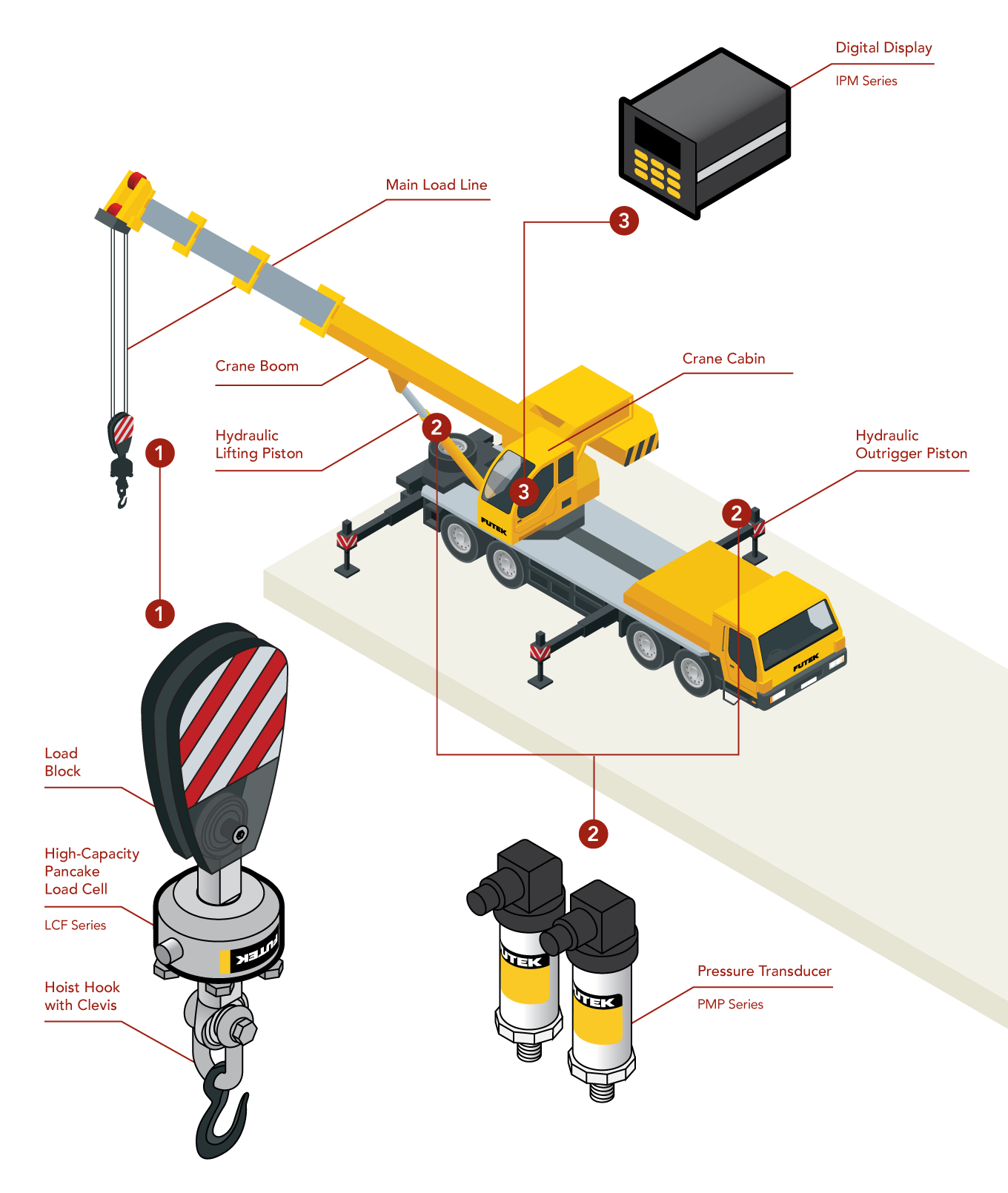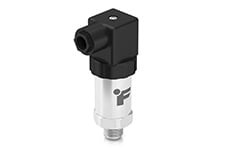When a crane lifts heavy loads to tall heights, it's imperative that the truck is completely stable. Measuring the lifting load with a crane load monitoring system helps ensure the stability of the operation.
For construction or industrial applications calling low to medium duty capacities, tension load cells are used to measure tensile or “pulling” loads, making them ideal in crane, hoist weight monitoring and rigging applications. These crane load monitoring systems are also known as load monitoring indication (LMI), tension links or load shackles.
Load cells are commonly installed to a load block and hoist hook to ensure that the crane is not overloaded. The operator can monitor online as the load is being applied to the hoist until the load is fully suspended. At any point as the load increases, the operator can reverse the lift in case of overload. A load indicator installed in the operator cabin can be used to shut down the lifting operation, activate flashing light and/or activate an audible alarm.
FUTEK LCF Load Cell Series is suitable for up to 100,000 lbs capacity and can withstand up to 150% safe overload with IP protection up to IP65, making it suitable for heavy industrial applications.
All hydraulic crane parts must work together for maximum safety. Along with the load measurement, engineers can also measure the pressure of the hydraulic lifting piston and outrigger pistons. The lifting piston pressure provides overload and weight monitoring. It indicates the moment of force applied on the boom and the hook amplitude as the load is lifted.
To assure the truck’s stability, outriggers are used to act as balances that keep the crane from leaning too much to one side or the other. As shown in the illustration, these outriggers use pressure transmitters to ensure the proper pressure is distributed evenly to each side.
How it Works
FUTEK's LCF Pancake Load Cells are installed between the load block and hoist hook to measure crane lifting load. Additionally, PMP Pressure Sensors are installed in the crane hydraulic system to measure the pressure of the hydraulic lifting piston and outrigger piston.
As the load is lifted by the crane boom, the strain gauge load cell captures the weight of the hoisted load in real-time. At any point as the load increases, the operator can reverse the lift in case of overload. A load indicator or digital display is installed in the operator cabin for online monitoring.
Along with the load measurement, crane operators and engineers can also measure the pressure of the hydraulic lifting piston and outrigger pistons. The lifting piston pressure provides overload and weight monitoring of the hydraulic arms under existing load conditions. It indicates the moment of force applied on the boom and the hook amplitude as the load is lifted.
The IPM650 Intelligent Digital Display is paired with the sensors for real-time logging, interlock, and alarming.
These systems are also available with wireless / Bluetooth solutions to improve versatility and logistics.
Products in Use
LCF Series Pancake High Capacity Load Cell paired with IPM650 Intelligent Digital Display;
PMP Series Pressure Transducer. Its rugged design provides resistance to vibration, shock, wide temperature variations, RFI and other extreme environmental conditions that are typical of industrial and OEM applications.
Contact Us
Please Contact Us with questions.
When a crane lifts heavy loads to tall heights, it's imperative that the truck is completely stable. Measuring the lifting load with a crane load monitoring system helps ensure the stability of the operation.
For construction or industrial applications calling low to medium duty capacities, tension load cells are used to measure tensile or “pulling” loads, making them ideal in crane, hoist weight monitoring and rigging applications. These crane load monitoring systems are also known as load monitoring indication (LMI), tension links or load shackles.
Load cells are commonly installed to a load block and hoist hook to ensure that the crane is not overloaded. The operator can monitor online as the load is being applied to the hoist until the load is fully suspended. At any point as the load increases, the operator can reverse the lift in case of overload. A load indicator installed in the operator cabin can be used to shut down the lifting operation, activate flashing light and/or activate an audible alarm.
FUTEK LCF Load Cell Series is suitable for up to 100,000 lbs capacity and can withstand up to 150% safe overload with IP protection up to IP65, making it suitable for heavy industrial applications.
All hydraulic crane parts must work together for maximum safety. Along with the load measurement, engineers can also measure the pressure of the hydraulic lifting piston and outrigger pistons. The lifting piston pressure provides overload and weight monitoring. It indicates the moment of force applied on the boom and the hook amplitude as the load is lifted.
To assure the truck’s stability, outriggers are used to act as balances that keep the crane from leaning too much to one side or the other. As shown in the illustration, these outriggers use pressure transmitters to ensure the proper pressure is distributed evenly to each side.


